Mary for Today Part 5
The World Mary Lived In
Her Feet on the Ground:
Sociology and archaeology have given us so much in recent years in reconstructing the life of a woman in first century Israel. There is real value in trying to understand the meaning of Mary as a particular person with her own life to compose, not as a woman divorced from her history, and turned into the maternal face of God, the eternal feminine, the idealized church, etc.
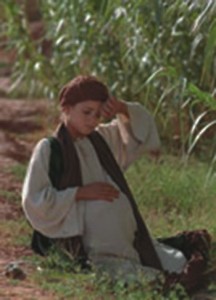 We may even feel closer to her. She was an actual human person, a mother at between twelve and fifteen years of age, struggling with her own life journey, which was also ‘a pilgrimage of faith,’ including its dark night (Vatican II).
We may even feel closer to her. She was an actual human person, a mother at between twelve and fifteen years of age, struggling with her own life journey, which was also ‘a pilgrimage of faith,’ including its dark night (Vatican II).
Miriam of Nazareth was a poor woman, along with the many poor women whose lives are lost in the mists of unimportance. She lived her life in an economically poor, politically oppressed, Jewish peasant culture, marked by exploitation and public violence.
This is not the Mary we have been given. Instead we have the Mary of the ruling classes of medieval Europe, who made Mary one of themselves, “Madonna, Our Lady”.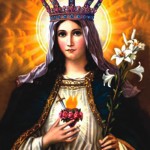
“About Palestinian housewives they knew nothing; if they had, they would have found her like the maids of their palace kitchens or the peasant women of their domains. Before they could venerate Mary, they had to extract her from her own historical life and turn her into the ideal woman, a high-class gentlewoman like themselves.
A Woman in her World:
What was life like for a woman such as Mary in the Hebrew world of the first century? It is no easy search as the Bible focus is on men. Of the 1,426 names given, 1,315 are men, 111 are women: only 9%. The realm of public and communal life is dominated by kings, warriors, priests, prophets, and sages. The more private or domestic area of life, traditionally that of a woman like Mary, receives little direct attention. Given the extremely few references to Mary in the NT and the little we can gain from her in history, it is surprising how great a significance she has in both Christian and Muslim traditions.
At the level of human activity, the primary Mediterranean cultural value was ‘being’, responding to life’s experiences, rather than taking charge and ‘doing.’ Mary in the role of ‘doing’ can be seen at the wedding in Cana where she invites Jesus to intervene in a moment of need, then gives instructions to the servants, and apparently ‘takes charge’ of the situation; her behaviour rather indicates that she and Jesus are somehow related to this couple and family. It would be very shameful for a non-relative to interfere in the affairs of a non-related family. Yet, even here, Mary responds spontaneously as a female relative is expected to respond; with concern for the honour of the family lest it be shamed by a sudden shortage of wine at a celebration. When Mary learns from the angel that her kinswoman, Elizabeth, is pregnant, she sets out with haste to visit her. Mary’s response to the news is spontaneous and immediate, proper to the present moment. Different values overlap (the present moment, spontaneous response, a significant other from the group).
Of Farms and Feeding: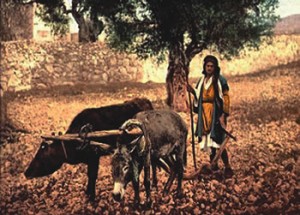
The economy of Ancient Israel was based on agriculture. Poor soils and insecure rainfall meant that life was precarious for families living in tiny highland villages such as Nazareth, a small village that may have numbered between 300-400 people. The normal pattern of the whole peasant family working the land did not apply for the family of Joseph. Nearby, the large city of Sepphoris was under construction. There, a builder or stone worker (rather than carpenter, or worker in wood, a rare and precious commodity), would find employment. Joseph may well have moved to Nazareth which was within a brief hour or two walk of 3-4 miles, in order to find work offered at the growing, gleaming Herodian city of Sepphoris. The destruction of the former city of Sepphoris as brutal Roman reprisal for the revolt of Judas the Galilean in 4 BCE with its burning of the city and enslavement and levelling of surrounding villages would have been part of the life of a young mother, Miriam, with her new-born son, as would the enslavement of her friends and relatives.
Daily Chores:
We know much about village agricultural economy and the work that would have made up most of Mary’s life. Most households and villages survived by growing grain (wheat and barley), olives and grapes, as well as orchard and garden crops. Each family kept a few animals, sheep, goats, cows, oxen, important as a food source if the crops failed - a not infrequent event as rain was notoriously unreliable. A good growing season allowed for three harvests. 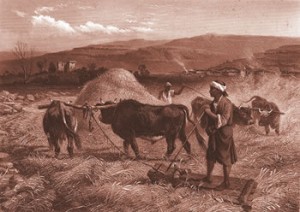
Women spent the same number of hours as men in planting, weeding, harvesting. Men probably did the initial work of ploughing, clearing, and terracing. This would average out at 4-5 hours a day for women, in fields removed from the house. Nearer home would be a small family plot where tasks more compatible with child care would be carried out. This was gardening work, cultivating fruit trees, vines, vegetables, herbs. This took up a significant part of the day.
Food production was only part of the work; food had to be stored for the non-growing season. Archaeology has turned up a wealth of storage jars and pits. Grains, olives, fruit and herbs had to be transformed into forms that keep. Threshing, pounding, drying, pitting foodstuffs for year round supply was a woman’s responsibility. We know today how much work is involved in preserving and processing staple cereal crops: soaking, milling, grinding, mixing, setting to rise, baking, before bread, the staff of life, is available. The parable of the leaven in the bread in Mt. 13:33 was a scene the child Jesus saw Mary engaged in many times.
Grain processing on its own took two hours a day. Add the preparation of other foods, and the dairy produce with its routine care of animals, feeding, milking, and cleaning the domesticated animals quartered in the ground floor of the house or courtyard. Other areas of responsibility were making clothes (remember the seamless garment in the crucifixion scene [John 19:23-24]?) as well as household vessels and implements such as pottery and baskets.
The common courtyard, surrounded by extended family or close kinship group, contained a shared oven, a cistern for water, and a millstone for grinding grain. This was the kitchen area where food was prepared and cooked in the open air.
Domestic animals also lived here. The people of the village as a whole shared larger food-preparation facilities such as a threshing floor, olive press, and wine press. The diet was mainly grain and olive oil, with some fruits, vegetables, and wine, along with occasional milk products if one had flocks of sheep, or fish if one lived near the lake. Living at subsistence level, households by and large grew their own food, did their own building, and sewed their own clothes from cloth that they spun and wove, mostly woollen cloth from sheep.
Final Thoughts:
Much of what I have outlined is typical, monotonous, and repetitive. Yet this was her life. In this way she contributed to the work of her Son. When she did take time to visit her Son when he was about his work, it was exceptional enough to be recorded (Mk 3:31-35). Together with Joseph she lived as one of the insignificant people of Nazareth. She lived out her whole life in the spirit of her Fiat. We live out the mystery of obedience in the ordinary events and pre-occupations of everyday life. Humble fidelity, constant, unspectacular, patient, this is the mark of Mary’s life as well as the life of most of us. We offer to God what we can, a God who can take the very ordinariness of a life like Mary’s - or our own, and use it to bring in the great mystery of the reign of God.
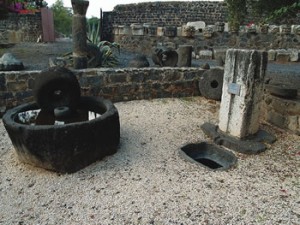
 Entries(RSS)
Entries(RSS)